Memorial Day Sale in Portsmouth
May 25th, 2013
|
Small picture, huge price. This 8¾" x 16¾" oil on panel, The Beach at Trouville, signed by French painter Eugène Louis Boudin (1824-1898), sold to a phone bidder for $542,400, smashing the $90,000/150,000 estimate. The bidder was on the phone, underbid by another phone. It was dated 1880 and inscribed “a Madame Vinton Souvenir 1890 Trouville.” A printed label on reverse from the Cleveland Museum of Art noted “Perry Estate/ TR 18195/16.” The painting once belonged to the wife of artist Frederick Porter Vinton, Annie M. Peirce (1855-1929). A portrait of her by William Merritt Chase is in the collection of the Washington State University Museum of Art.
This one was hard to understand. Estimated at a paltry $400/600, the 4 7/8" Chinese Famille Verte bowl, with a Kangxi mark, sold for $251,200 to a New York City dealer who identified himself only as “John.” The underbidder was on the phone. Several dealers in Asian antiques said it was much better than the low estimate but were puzzled at the high price. The buyer reportedly said he thought it is related to a wucaicup that sold at Sotheby’s in Hong Kong in April 2012 for approximately $744,344.
A phone buyer paid $6000 for this New York Classical dressing table, cataloged as “school of Duncan Phyfe.” The estimate was $1000/2000, a sure signal it was actually for sale at the auction. It had one long and two short drawers, stamped brass pulls, reeded legs, and brass ball feet and was 36¾" high x 35¾" wide x 19¾" deep. |
Northeast Auctions, Portsmouth, New Hampshire
Photos courtesy Northeast Auctions
A cold front and persistent wind and rain meant it was freezing cold sitting under the tent at Northeast Auctions in Portsmouth, New Hampshire, at the annual Memorial Day sale on Saturday, May 25, the first session of the two-day auction. It was so cold several members of the audience went and found furniture packing blankets to try to keep warm.
The top lots at the sale were objects that Northeast Auctions, long a specialist in Americana sales, isn’t exactly known for: an 8¾" x 16¾" beach scene by French artist Eugene Boudin (1824-1898) that sold for $542,400 (includes buyer’s premium); a Lalique glass perfume flacon that sold for $284,800; and a Chinese export Famille Verte bowl with a Kangxi mark that sold for $251,200.
There was Americana, including American furniture lots deaccessioned by the Museum of the City of New York, and a scrimshawed Susan tooth went to a phone bidder for $96,000.
In the end, the sale with approximately 919 lots brought in just under $2.4 million. That total is a marked improvement over last year’s Memorial Day event when the total was $1.436 million. An increase of almost $1 million led James E. Horan Jr., Northeast Auctions’ director of financial and technical services, to remark, “The market is no longer as anemic as it once was.”
A large consignment of Venini glass that descended in the Venini family helped bolster the bottom line. The collection was from the estate of Laura Venini Hillyer (1926-2013), the daughter of the glassworks’ founder, Paolo Venini, and his wife, Ginette. How did the personal collection of Italian art glass royalty end up selling on the New Hampshire seacoast? Laura was the mother of Francesca Combs, who is married to Peter L. Combs of Gloucester, Massachusetts, a dealer and a longtime friend of auctioneer Ron Bourgeault of Northeast Auctions.
“I think the sale did extremely well,” said Combs. “The family was very pleased across the board. Some things went a lot higher, some things sold in the middle, and some things didn’t sell well, but the average was way above what we expected.”
Asked what surprised the family, Combs mentioned a Russian icon on a wood panel in a shadowbox frame of the Ascension of Christ that sold for $11,400, well above the estimate of $900/1500. “Nobody thought it would bring that,” Combs said.
The family was also pleased with a red and white Venini murrine glass bowl, an early experimental example by Italian artist Carlo Scarpa (1906-1978), that sold to dealer Martin Cohen for $20,400. Combs said, “That’s a very strong number for Scarpa.”
“It was all well received,” Combs said of the Venini family lots. “There was a lot of interest from Italy. My wife [Francesca] was on the phone taking bids; she speaks Italian…In the end, everybody was happy. I wasn’t worried about it.” Combs said he did auctions for years—he ran the Landry Auctions in Essex, Massachusetts—and “if you advertise the sale well, and get the word out, the market will tell you what it is worth that day.”
The cire perdue, or “lost wax” technique, teardrop-shaped flacon by Rene Lalique that sold for $284,800 was an early piece and rare. It sold to dealer David Weinstein of DJL Trading, Glen Cove, New York, who was bidding by telephone; the underbidder was also on the phone.
“As of now, there are four known examples with various motifs, two with sirens and two with fish,” said Weinstein about the cire perdue perfume flacon. “This particular one had not been seen before or recorded.” Weinstein said it was a very early piece and dated it to circa 1905.
The lid of the flacon was gold, not gilt metal, and the crown was silver set with opals and diamonds. An auction catalog addendum suggested the top might have been by Lalique’s own hand. “It’s quite possible the top was by Lalique. It’s definitely old,” said Weinstein, adding that because Lalique was in a transitional period from jewelry to glass he might have made the top, but “it’s unlikely we’ll ever know whether he did or he didn’t.” He added, “Even if Lalique didn’t make it, someone approved it, and Lalique sold it.”
Weinstein bought the flacon for his private collection. “I have the largest collection of cire perdue pieces in the world.” Asked about the price, he said, “I purchased it without regret.”
Nicholas Dawes, author of Lalique Glass and vice president of special collections for Heritage Auction Galleries in New York City, said, “Lalique was a jeweler until he was about fifty. In about 1910 he became a glassmaker officially. Throughout his transitional period, for almost fifteen to eighteen years, he was experimenting with other things, including glass. One of the first things he’s recorded as making—in the 1890’s—is a perfume bottle,” said Dawes.
Dawes’s book, published in 1986, includes an account of Lalique’s manufacture of a similar bottle, possibly the first all-glass object made by Lalique. “In [Lalique’s] own kitchen he made his first experiment with pure glass…a tiny tear bottle, a droplike gem, molded in a simple cooking pan over the fire in his stove in the Rue Thérèse.”
For more information, contact Northeast Auctions at (603) 433-8400; Web site (www.northeastauctions.com).
|
|
|
|
|
|
|
|
|
|
|
|
|
|
|
|
Originally published in the August 2013 issue of Maine Antique Digest. © 2013 Maine Antique Digest





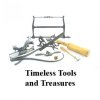

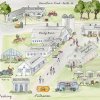

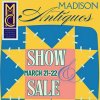



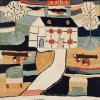







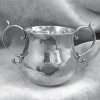






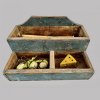




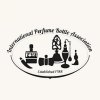



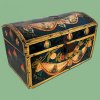

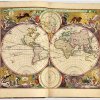

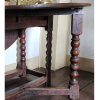

 The circa 1905 emerald green glass perfume flacon in a teardrop shape by Rene Lalique, only 4" high, depicting sirens in waves, sold for $284,800 to dealer David Weinstein of DJL Trading, Glen Cove, New York, underbid by a phone bidder. Bourgeault said interest came in from all over the world. Could it have been a bargain? In October 2012, East-West Auctions in Tokyo, Japan sold another sirens flacon for around $375,000. According to Weinstein, the Tokyo bottle had condition problems, including a repaired hole.
The circa 1905 emerald green glass perfume flacon in a teardrop shape by Rene Lalique, only 4" high, depicting sirens in waves, sold for $284,800 to dealer David Weinstein of DJL Trading, Glen Cove, New York, underbid by a phone bidder. Bourgeault said interest came in from all over the world. Could it have been a bargain? In October 2012, East-West Auctions in Tokyo, Japan sold another sirens flacon for around $375,000. According to Weinstein, the Tokyo bottle had condition problems, including a repaired hole.

 Porringer-top tea table in maple, attributed to Rhode Island, sold to a phone bidder for $8400. The estimate was $5000/8000. It measured 26½" high, and the top was 34½" x 25¾".
Porringer-top tea table in maple, attributed to Rhode Island, sold to a phone bidder for $8400. The estimate was $5000/8000. It measured 26½" high, and the top was 34½" x 25¾". The Susan tooth (both sides shown), dated August 28, 1829, had been seen at Northeast Auctions before. It was offered in August 2012 with a $125,000/175,000 estimate and failed to sell. This time, with a lowered estimate of $60,000/90,000, it sold to a phone bidder for $96,000. It’s one of the smaller Susan teeth, measuring 7½" long. Pennington photos.
The Susan tooth (both sides shown), dated August 28, 1829, had been seen at Northeast Auctions before. It was offered in August 2012 with a $125,000/175,000 estimate and failed to sell. This time, with a lowered estimate of $60,000/90,000, it sold to a phone bidder for $96,000. It’s one of the smaller Susan teeth, measuring 7½" long. Pennington photos. This cast and wrought brass 12-armed candelabrum was designed in 1901 by German architect, designer, and educator Bruno Paul (1874-1968) and manufactured by K.M. Seifert, Dresden-Löbtau, for the Vereinigte Werkstätten für Kunst Handwerk (United Workshops for Art in Crafts) in Munich. It’s 16¾" tall x 27½" wide. It sold to an absentee bidder for $6000—well above the $1000/1500 estimate; the underbidders were Milwaukee collectors. Sotheby’s has sold two other examples in the past, both highly polished; one brought $52,000 in December 2007, and another brought $25,000 in December 2008. The arms swivel to create a stylized tree form. An example was included in the 1988 Art Nouveau in Munich: Masters of the Jugendstil exhibition at the Philadelphia Museum of Art. The catalog for the exhibition called it “the most spectacular of all Jugendstil candelabras.”
This cast and wrought brass 12-armed candelabrum was designed in 1901 by German architect, designer, and educator Bruno Paul (1874-1968) and manufactured by K.M. Seifert, Dresden-Löbtau, for the Vereinigte Werkstätten für Kunst Handwerk (United Workshops for Art in Crafts) in Munich. It’s 16¾" tall x 27½" wide. It sold to an absentee bidder for $6000—well above the $1000/1500 estimate; the underbidders were Milwaukee collectors. Sotheby’s has sold two other examples in the past, both highly polished; one brought $52,000 in December 2007, and another brought $25,000 in December 2008. The arms swivel to create a stylized tree form. An example was included in the 1988 Art Nouveau in Munich: Masters of the Jugendstil exhibition at the Philadelphia Museum of Art. The catalog for the exhibition called it “the most spectacular of all Jugendstil candelabras.” It was a phone bidding battle for this portrait of English explorer Samuel Hearne (1745-1792), 15" x 12¾", famous for his service with the Hudson’s Bay Company in Canada, his travel down the Coppermine River to the Arctic Ocean in 1771, and as governor of Prince of Wales Fort on Hudson’s Bay. In 1782, he surrendered the fort to the French, who under the command of Jean François de Galaup, comte de Lapérouse, didn’t fire one shot. (To be fair, the fort had 39 men; the French had three ships and over 400 men.) He returned to England in 1787 and died in 1792. In 1795, his story was published in A Journey From Prince Of Wales’s Fort, In Hudson’s Bay, To The Northern Ocean. Undertaken By Order Of The Hudson’s Bay Company. For The Discovery Of Copper Mines, A North West Passage, &C. In The Years 1769, 1770, 1771, & 1772. Estimated at $800/1200, the portrait, inscribed “Samuel Hearne/ Chief of Prince of Wales’s Fort/ Hudson’s Bay,” took off to $26,400.
It was a phone bidding battle for this portrait of English explorer Samuel Hearne (1745-1792), 15" x 12¾", famous for his service with the Hudson’s Bay Company in Canada, his travel down the Coppermine River to the Arctic Ocean in 1771, and as governor of Prince of Wales Fort on Hudson’s Bay. In 1782, he surrendered the fort to the French, who under the command of Jean François de Galaup, comte de Lapérouse, didn’t fire one shot. (To be fair, the fort had 39 men; the French had three ships and over 400 men.) He returned to England in 1787 and died in 1792. In 1795, his story was published in A Journey From Prince Of Wales’s Fort, In Hudson’s Bay, To The Northern Ocean. Undertaken By Order Of The Hudson’s Bay Company. For The Discovery Of Copper Mines, A North West Passage, &C. In The Years 1769, 1770, 1771, & 1772. Estimated at $800/1200, the portrait, inscribed “Samuel Hearne/ Chief of Prince of Wales’s Fort/ Hudson’s Bay,” took off to $26,400. How’s this for Americana? The folk art lattice-work arch, topped with a shield, was most likely made for a Fourth of July event. Standing 121" high x 74" wide, it sold for $3840, well above the $800/1200 estimate.
How’s this for Americana? The folk art lattice-work arch, topped with a shield, was most likely made for a Fourth of July event. Standing 121" high x 74" wide, it sold for $3840, well above the $800/1200 estimate. Bids from all over the house, phones, and the Internet pushed the New York Neoclassical piano stool of the 19th century with a lyre-form splat well over the $800/1200 estimate to $6600. It had a turned crest rail, adjustable seat, reeded legs, and brass ball feet. A phone bidder picked it up.
Bids from all over the house, phones, and the Internet pushed the New York Neoclassical piano stool of the 19th century with a lyre-form splat well over the $800/1200 estimate to $6600. It had a turned crest rail, adjustable seat, reeded legs, and brass ball feet. A phone bidder picked it up. It’s the only example known. This Venini green and clear blown glass cane globular bowl, 5 1/8" tall x 7" diameter, sold for $3840 to a phone bidder. The estimate was $800/1200.
It’s the only example known. This Venini green and clear blown glass cane globular bowl, 5 1/8" tall x 7" diameter, sold for $3840 to a phone bidder. The estimate was $800/1200. New York dealer Martin Cohen paid $20,400 for this Venini murrine glass bowl, red and white, designed by Carlo Scarpa. It’s the only known example and was given to Laura Venini by Scarpa in the 1940’s while he worked at Venini (he was there from 1932 to 1947). It measured 3¾" x 8½"; the underbidder was on the phone.
New York dealer Martin Cohen paid $20,400 for this Venini murrine glass bowl, red and white, designed by Carlo Scarpa. It’s the only known example and was given to Laura Venini by Scarpa in the 1940’s while he worked at Venini (he was there from 1932 to 1947). It measured 3¾" x 8½"; the underbidder was on the phone.


